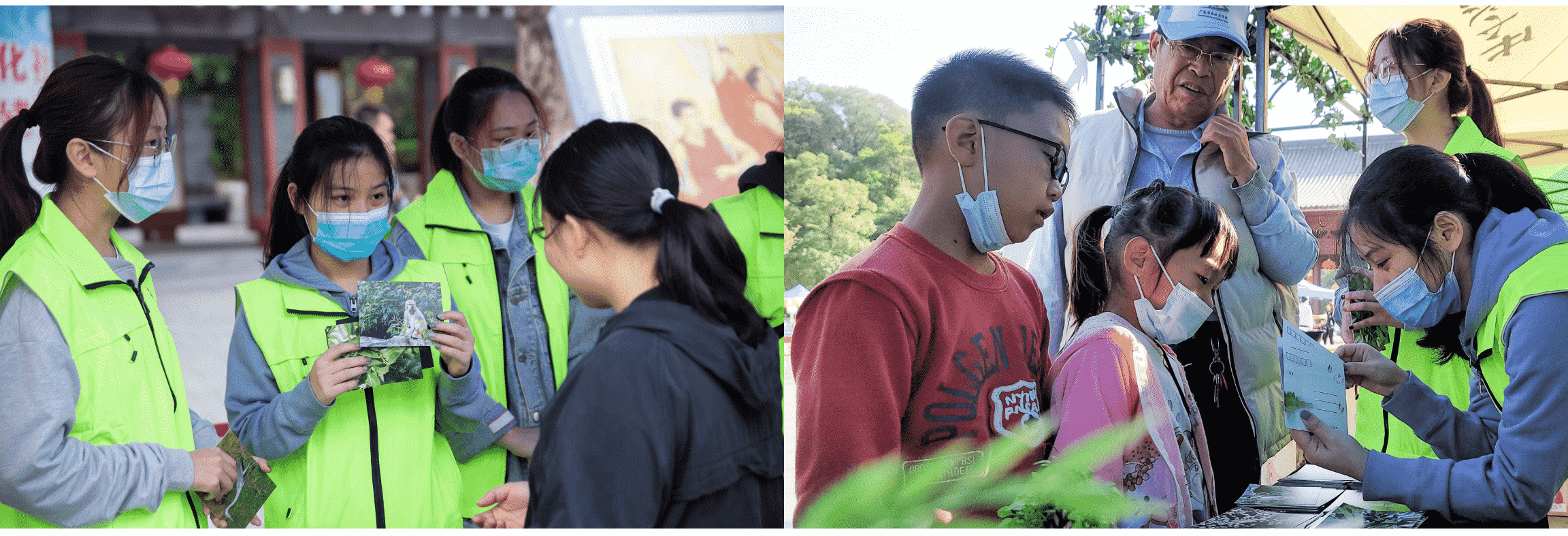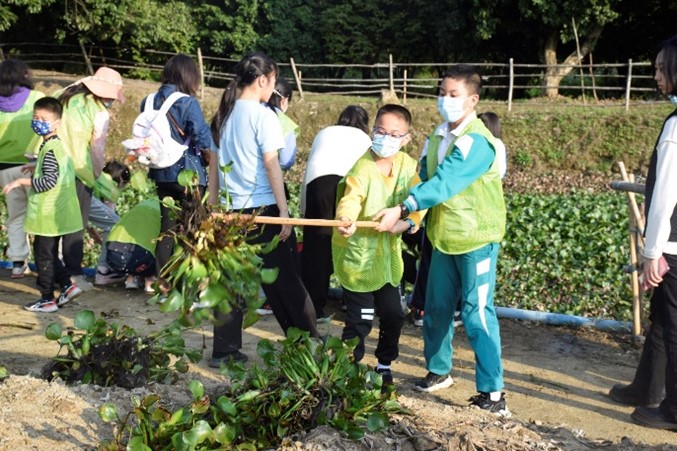 Volunteers host an awareness raising booth at a Forestry Culture Week event in Guangzhou, to teach children and young people about endangered species in China
Photo: GZGC
Volunteers host an awareness raising booth at a Forestry Culture Week event in Guangzhou, to teach children and young people about endangered species in China
Photo: GZGC
Through such training courses, volunteers are equipped with a better understanding of the biodiversity surrounding their home. They organised 30 activities for over 900 participants over the last two years. These activities included removing invasive species, like the Saltwater Cordgrass that compete with other plant species and disrupt the feeding habitats for shoreline birds, from coastal areas. They also helped restore mangroves, conducted bird surveys in urban areas and raised awareness among tourists on the importance of conserving biodiversity along the popular coastal areas in Guangzhou.
GZGC, an IUCN Member in China established in 2012, is a social organization dedicated to promoting environmental protection, cultural development and environmental education. Recognising that qualified volunteers are hard to find and even harder to retain, GZGC took to the digital world to recruit and match volunteers directly with biodiversity conservation organisations through a commonly used messaging platform. They set up a volunteer network in Guangdong, which houses Guanzhou as its capital, as well as Hong Kong and Macao, to create a space for volunteers to regularly connect and share experiences with one another. “The biggest gain has been meeting a group of like-minded friends, helping young people who want to do something to help nature and perhaps even start a career related to the environment,” Xiaoyan shares.
To make sure the hard work and dedication of their volunteers doesn’t go unrecognised, GZGC used a digital system to document the performance of their volunteers. The top 25 most active and high achieving volunteers were selected and awarded by GZGC for their dedication to volunteerism. Xiaoyan was among those recognised for her enthusiasm and many hours of dedication to local conservation efforts.
 Xiaoyan led a guided tour for children to discover the creatures that come out at night in Guangzhou
Photo: GZGC
Xiaoyan led a guided tour for children to discover the creatures that come out at night in Guangzhou
Photo: GZGC
Another important activity of the project was the development of a Volunteer Service Standard – the first of its kind in provincial China. The standards provide guidance for high-quality recruitment of volunteers, their selection and training, as well as how to conduct informative and engaging activities. “These guidelines provide a framework to engage social organisations and volunteers connected with nature across China,” Mr Chen Zhiqiang, Director of GZGC, explained.
 Volunteers support removal of common water hyacinth, an invasive species suffocating waterways in Guangzhou
Photo: GZGC
Volunteers support removal of common water hyacinth, an invasive species suffocating waterways in Guangzhou
Photo: GZGC
Local organisations regularly share new volunteer opportunities through the online messaging platform set up during the project. GZGC also continue finding opportunities to empower young people with the necessary knowledge and skills to educate others, which they hope will in turn inspire and mobilise entire communities to play an active role in conservation. Xiaoyan says attracting more people, especially youth, to get involved in volunteering gives her hope for the future. “[By] serving as a volunteer I can pass on my knowledge to them and support local organisations to achieve their goals to protect the environment and conserve nature.”

